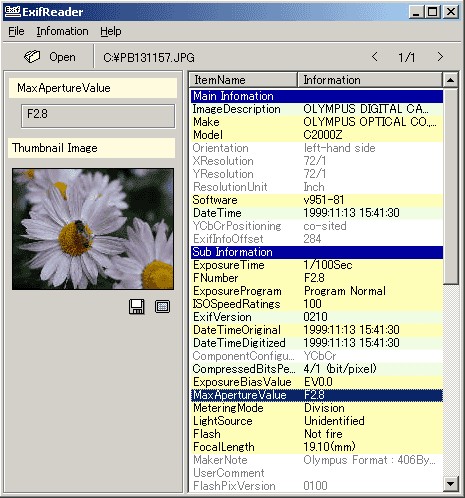
Unlock the Power of Image Metadata with EXIF Reader: A Must-Have Tool for Photographers and Developers
Created on 21 March, 2025 • Mics Tools • 672 views • 2 minutes read
In the digital age, understanding image metadata is crucial for photographers, developers, and digital marketers.
In the digital age, understanding image metadata is crucial for photographers, developers, and digital marketers. EXIF Reader, a powerful tool designed to decode and display EXIF data embedded in images, offers unparalleled insights into image properties. Whether you're analyzing camera settings or optimizing images for SEO, EXIF Reader simplifies the process and enhances productivity.
What Is EXIF Data?
EXIF (Exchangeable Image File Format) data refers to metadata embedded in image files, typically by cameras or smartphones. This information includes:
- Camera Details: Make, model, lens specifications.
- Image Properties: Resolution, orientation, exposure settings.
- Date and Time: Timestamp of when the photo was taken.
- GPS Data: Location coordinates of the image capture.
EXIF data is invaluable for cataloging images, analyzing photographic techniques, and even improving search engine optimization (SEO) for websites.
Features of EXIF Reader
EXIF Reader stands out as a lightweight yet robust tool for extracting and decoding EXIF metadata. Key features include:
- Comprehensive Metadata Extraction: Displays detailed information such as camera settings, GPS coordinates, and thumbnail properties.
- Support for Standard Tags: Covers all standard EXIF tags, ensuring compatibility with most image formats.
- Categorized Outputs:Image: Basic TIFF properties like width, height, resolution.Thumbnail: Embedded thumbnail details.Photo: Advanced photographic data including exposure time and ISO settings.GPSInfo: Precise geolocation data.Iop: Interoperability information for seamless integration.
- Image: Basic TIFF properties like width, height, resolution.
- Thumbnail: Embedded thumbnail details.
- Photo: Advanced photographic data including exposure time and ISO settings.
- GPSInfo: Precise geolocation data.
- Iop: Interoperability information for seamless integration.
- Ease of Use: Install via npm (npm install exif-reader) and decode EXIF data effortlessly using simple code snippets.
Why Choose EXIF Reader?
For Photographers
EXIF Reader allows photographers to analyze their images in detail. By understanding camera settings like aperture, shutter speed, and ISO values, photographers can refine their techniques and improve future shots.
For Developers
Developers benefit from its ability to integrate seamlessly into applications. With built-in support for jpg-stream, it enables efficient extraction of EXIF data from JPEG files.
For SEO Optimization
EXIF metadata plays a significant role in SEO by providing additional context to search engines. Optimizing images with accurate metadata can improve visibility and rankings.
How to Use EXIF Reader
Using EXIF Reader is straightforward:
- Install the package via npm:bashnpm install exif-reader
- Decode raw EXIF data from a buffer:javascriptconst exif = require('exif-reader'); const metadata = exif(buffer); console.log(metadata);
The resulting output categorizes metadata into sections like Image, Photo, GPSInfo, etc., making it easy to analyze specific properties.
Alternatives to EXIF Reader
While EXIF Reader is an excellent choice for developers, other tools cater to different needs:
- Exif Viewer: A portable application for Windows users that displays EXIF data within file properties.
- Adobe Lightroom/Photoshop: Ideal for photographers who need advanced editing alongside metadata analysis.
- ExifTool: A versatile command-line tool offering extensive customization options.
EXIF Reader is more than just a tool—it's a gateway to understanding your images better. Whether you're a photographer seeking to improve your craft or a developer integrating metadata into your applications, this tool delivers unmatched functionality. Optimize your workflow today by leveraging the power of EXIF Reader!